16/03/2023
16/03/2023
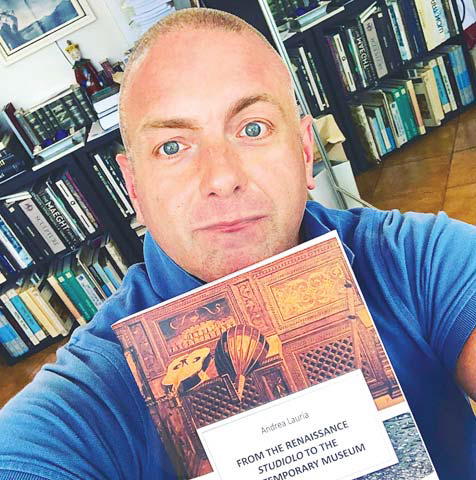
Prof. Andrea Lauria is an Italian museologist graduated from Rome’s Accademy of fine arts. He also holds a History of Art degree from University di Roma Tre in Rome. Andrea Lauria lectures a Masters course in museology at Rome’s Universities Tor Vergata and American Temple University (Rome Campus). In 2020 he has become a published author of the book: ‘From the Renaissance studiolo to the contemporary museum’ which is also his course manual. Lauria’s field of research is the phenomenon of hyper-museums with special attention to the Arabian countries in comparison with the western world.
In the last article, on the column “From Italy to the world”, I told you about the most famous Hyper-museum of the Arab peninsula, a museum that is at the center of a magnificent museological project in the Abu Dhabi Emirate. Today we are going to visit together National Museum of Qatar (NMoQ), located in Doha in Qatar not so far from the Louvre A.D.
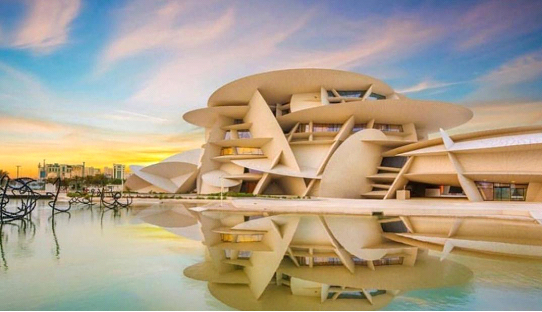
Qatar is actually very active In the museums field and has several other very interesting museums like The Museum of Islamic Art, designed by Ieoh Ming Pei and opened in 2008, is regarded as one of the best museums in the region and Mathaf: Arab Museum of Modern Art established in 2010. QMA also sponsors artistic events abroad, such as major exhibitions by Takahashi Murakami in Versailles (2010) and Damien Hirst in London (2012). Qatar is also the world's biggest buyer in the art market by value. The Qatari cultural sector is being developed to enable the country to reach world recognition to contribute to the development of the country as has been seen by the whole world during the 2022 World Cup.
The director of the museum (from 2013) is Sheikha Amna bint Abdulaziz Al Thani the sister of the ruling Emir of the State of Qatar, and the prominent collector and art patron Sheikh Hassan bin Mohammed Al Thani.. Sheikha Amna, has an international background she earned an MSc in Sociology from the London School of Economics and a Bachelor of Science in Business Administration and English from Carnegie Mellon University. Sheikha Amna beyond being the CEO of the Qatar Museums Authority (QMA) is very active in the National Museum of Qatar development and planning.
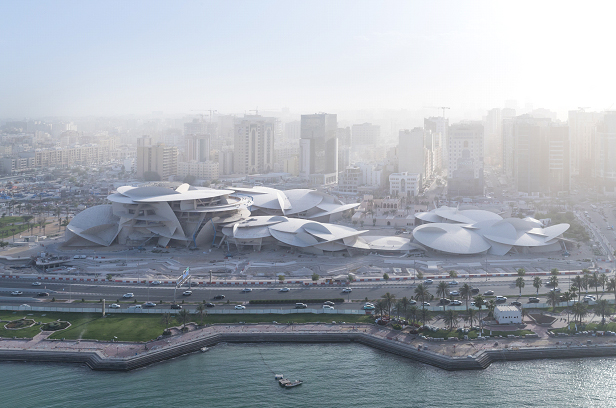
The National Museum of Qatar was opened to the public on 28 March 2019 and is a huge complex, 52,000 m2 (350 m. long), constructed around The Sheikh Abdullah bin Jassim Al Thani's Palace, which is the heart of the Qatari national identity. The historical palace has been carefully restored so that it can be enjoyed by visitors as well.
Designed by the Archi-Star Jean Nouvel, the same architect of Louvre A.D., the National Museum of Qatar is a wonderful example of a hyper-museum, which brings Qatar authoritatively into to the scene of world hyper-museums.
As all hyper-museums the priority in the project is given to turn the museum building into a spectacular building over the effectiveness of the display of the works of art preserved. The museum is spectacular with imposing volumes and resembles a sculpture more than a building, which aim is clearly to astonish the viewer. The museum itself is the principal piece of art of the collection and, as in cases of Guggenheim in New York or in Bilbao, where we go to visit the building primarily not the collection or the museum’s content.
The National Museum of Qatar is a strong land-mark, the leading building within the urban context, influencing not only the neighborhood, in which it is located, but also the entire city of Doha.
If in the Louvre Abu Dhabi the museum is dominated by the huge imposing dome here we see a sculpture/museum where the discs are the main protagonists. Like a sculptor who carves the marble the architect creates a structure composed of discs with spherical sections, different diameters and varying degrees of curvature.
The vertical discs supporting the horizontal discs form the building’s bearing structure, while shade created by the overhanging features shelters visitors from the hot sun, as the Louvre’s dome in Abu Dhabi. Both the interior and exterior space reveal a landscape of interwoven discs surrounding the old building that integrate the exhibition spaces.
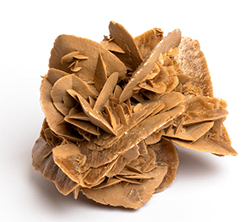
The new museum is dedicated to the history of Qatar and Jean Novel always attempts in his projects to harmonize his buildings with the territory traditions, culture, art but landscape too creating something very symbolic. Qatar is closely bound to the desert, its flora and fauna, its nomadic populations, traditions and the National Museum of Qatar is a perfect synthesis of all these various aspects.
Because the desert is closely linked to the identity of the country Nouvel in his projects wants to evoke the desert’s eternal dimension and fluidity. The high-quality fiber-reinforced concrete of the building has a sand-color in perfect harmony with desert and the city nuances. The Nouvel’s museum appears to both emerge from and blend in with the ground from a desert that has ventured all the way to the sea, the final result is astonishing.
If in the Louvre A.D. the architect was inspired by the Arab medinas, as we saw in the museum’s inside white buildings, here Nouvel was inspired by the desert rose crystal, which can be found in Qatar. “The desert and its eternal silence, as well as the kind of modernity and bravery that have disrupted what appeared to be imperturbable”, so Jean Nouvel noted. “Qatar is very closely tied to the desert, its flora and fauna, its nomadic populations and age-old traditions. To focus on all these various aspects, I needed something symbolic. I thought about the desert rose, a kind of miniature architecture emerging from the ground constructed out of the crystals that are formed when water evaporates in the wind. The museum I designed around this idea, with its large inward-curving discs, intersections and overhanging features, is simultaneously an architectural, spatial and sensorial entity”.
Several points provide direct access to a central courtyard, where the Sheikh Abdullah bin Jassim Al Thani's Palace is located, a protected and shaded space with the museum set around it. This central museum’s yard can host exhibits, performances and other events at the same time as exhibitions. The large openings around the structure offer glimpses of the museum’s gardens and Doha Bay.
The disks are composing and effecting not only the out side structure of the museum but are effecting the inside spaces too like galleries, halls, lobby etc. The disks slice through one another, resulting in an architectural composition made of complex geometric internal spaces. Navigating internal galleries, the visitor will find spaces that don’t exist anywhere else in the world, creating a unique experience for viewing art and traversing between exhibition halls
The museum layout is composed of a sequence of unique and diversified geometric spaces ensuring all the galleries are quite different and creating an overall sense of surprise and adventure. The permanent exhibitions, display in 11 galleries, it is composed by archaeological and heritage objects, manuscripts, documents, photographs, jewelry and costume that illustrate Qatar’s history, present and future.
A number of floors are on an incline, with ramps bridging the gap between interior spaces. For circulation around these forms, an interior circuit forms a loop, creating a sequential journey for visitors that ends in the discovery of the old The Sheikh Abdullah bin Jassim Al Thani's Palace.
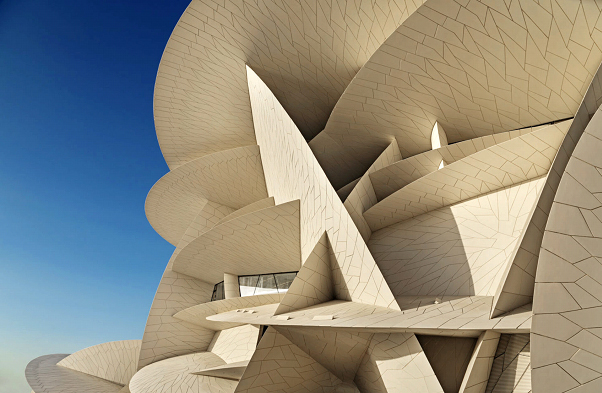
In the interior of the new Doha museum, all the facilities that all international hyper-museums have today, a 220-seat auditorium, two restaurants, a café, a traditional food forum and research center, laboratories along with access to digital archives for students. The National Museum of Qatar has also a landscaped park also where visitors can explore and learn about Qatar’s indigenous plants and their role in Qatari culture.
Qatar wanted to follow the great success of the hyper-museums phenomenon because they perfectly understood the creative and media potential of the hyper-museums as the importance of an Archi-star involved in to the project. With The new National Museum of Qatar the country has achieved this goal with the museum thanks to the Nouvel's great talent that created an amazing building in Doha. Time magazine named it one of the World's Greatest Places to Visit in 2019, citing the integration of "immersive video screens and dioramas" into Jean Nouvel's architectural design.
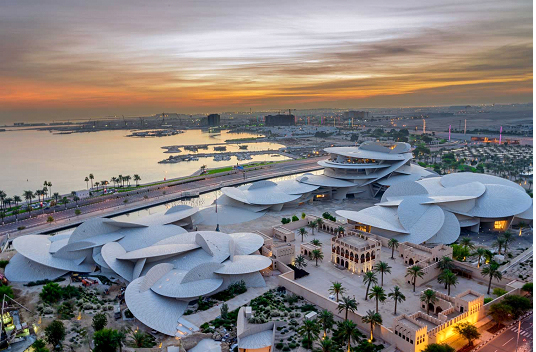
The museum attracts people as it depicts Qatar's history not through paintings and sculptures as a traditional museum, but with 21st-century lights, sounds and visuals creating an experience for the visitors. The new Doha museum displays the history of Qatar in three acts over an area of 1.5 million m². A journey through time, in which museum visitors travel more than 2.7km path.
If I would like to compare the National Museum of Qatar and Louvre Abu Dhabi both are hyper-museums designed by a famous Archi-star Jean Nouvel and strong land-mark, influencing the neighborhood and the city were they are located. Both museums look like sculptures, spectacular and the principal piece of art of the collection.
The big difference between the two museums is the conceptual and the museological approach. the National Museum of Qatar it is dedicated to the history of the country, but that is also its goal, the Louvre A.D. brings together art from all over the world to be the bridge between different arts, cultures and traditions of the planet.
The National Museum of Qatar is not only beautiful but it is also very interesting from a symbolic point of view. The Jean Nouvel's hyper-museum in Doha represents the new vision of the country and it emerges from the character of the museum, which on the one hand pays homage to the past, while on the other it celebrates the future. In addition to the interesting inspiration of the desert rose, that links symbolically the building to the desert and territory, what makes this museum very fascinating is the dialogue between the Sheikh Abdullah bin Jassim Al Thani's Palace and the new museum. The ring-shaped layout of the National Museum’s is therefore very symbolic, crossing the new museum, which represents the modernity of the country, we finally reach the Sheikh Abdullah bin Jassim Al Thani's Palace which represents the history and tradition of the country. The architect wants to take us on a journey backwards through history of the country to make us reflect on the historical and cultural evolution of Qatar. Nouvel creates a bridge between the past and the present, a representative synthesis of the country through architecture and its incredible hyper-museum.


